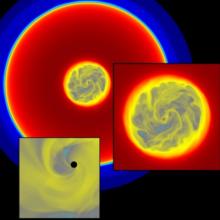
Description
This award provides travel funds to support technical coordination between the Blue Waters project team and a team of astrophysical researchers to explore the readiness of an astrophysics code for use on the Blue Waters system. If successful, it is anticipated that the code will be used for investigations of a series of problems associated with the merger of pairs of very dense astrophysical objects. These include: the merger of asymmetric black hole binaries, of neutron star binaries, and the merger of a black hole and a neutron star. Through accurate simulations, the researchers hope to characterize the gravity wave signatures of these events with a view to contributing information that will be useful in the diagnosis of gravity wave signals when these are received in terrestrial detectors. In the case of the slower process of neutron star merger, the oscillation modes of the neutron stars prior to merger are believed to be dependent on their internal structure so that comparison of numerical simulations and detected gravity wave signals should provide indirect information about the internal structure of neutron stars. A further topic of investigation is the dynamical behavior of relativistic accretion disks around black hole ? neutron star and neutron star ? neutron star mergers. One aim of these latter investigations is to characterize the highly energetic electromagnetic radiation generated through the interaction of the disrupted neutron star and the accretion disk.
The research to be done with Blue Waters will involve a number of graduate students and undergraduates. Results of the work will be included in undergraduate and graduate courses. Results will be disseminated through a visitor program in addition to scientific publications. The project team includes researchers from under-represented groups and young investigators. The project team plans to engage local high-school classes through presentations and high-school students through participation in a two-week academic program for high-school students.